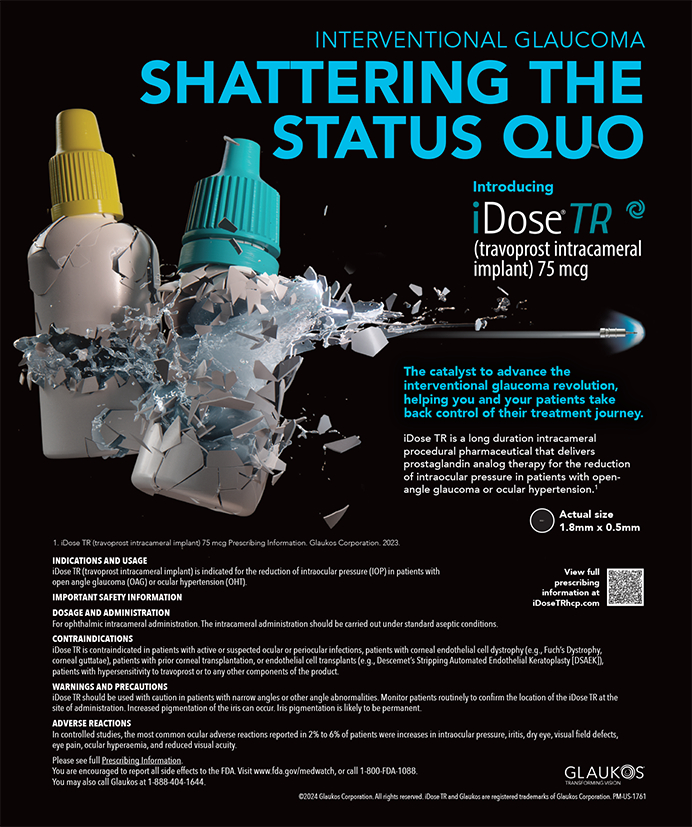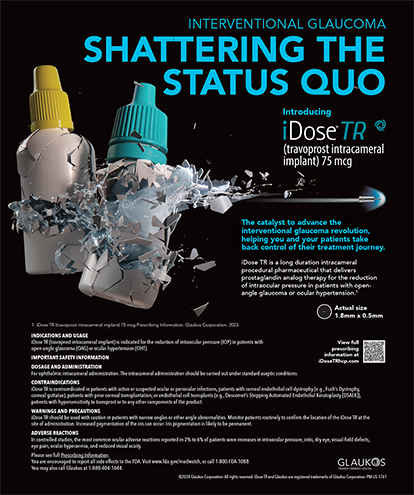
A predictable, safe, consistent means of surgical correction of presbyopia has eluded corneal refractive surgeons for decades. A variety of methods for altering the corneal shape have been attempted, but results have varied widely. These have included presbyopic LASIK using an excimer laser, Ho:YAG laser thermal keratoplasty, and corneal inlays. No single method has consistently been able to deliver predictable results to a large population of presbyopic patients. The reasons are multifactorial, but they include a diverse patient population with varying presbyopic demands, the limitations of each of the available techniques, and the natural aging characteristics of the human crystalline lens.
Recently, medical device manufacturers have turned their efforts to developing improved IOLs for the treatment of presbyopia. Part of their motivation is the massive population of baby boomers now entering their 60s and their eventual need for cataract surgery.
But patients with cataracts are not in the same universe as presbyopes. The mindset is different. Although in some of these patients a presbyopia-correcting IOL might be an option, I have found that early presbyopes and most late presbyopes are not ready for the discussion of a lens-based intraocular procedure. For a multitude of reasons, the time has not yet come.
A less invasive way of addressing presbyopia is an unmet medical need. A topical drop that could restore accommodative function would be a welcome addition to our array of treatment options for presbyopic patients.
AT A GLANCE
- There are at least four pharmacologic products for presbyopia in various stages of clinical development.
- Most depend on some combination of miotic agents to increase depth of focus.
- As these topical agents go through clinical trials and other agents are developed and become available, their indications and use in the presbyopic population will potentially increase.
OPTIONS ON THE WAY?
When talking with patients about treatment options for presbyopia, I’ve recently started mentioning that there might someday be an eye drop available to get rid of reading glasses. The typical response is “Wow! When can I get that?” Now I can tell them that the day may not be far off.
There are many pharmacologic products in various stages of clinical development for this indication of presbyopic therapy. Three are undergoing US clinical trials, and others may be available in Europe and elsewhere around the world. Some of these will be discussed below. None are commercially available in the United States at this time. Most of the agents being tested depend on combinations of compounds that induce miosis to increase depth of focus. Data on these topical agents in the peer-review literature are limited.
EVO6
In an early clinical trial, EVO6 (Novartis) demonstrated statistically significant improvement of near visual acuity compared with a placebo group.1 The topical formulation of lipoic acid choline ester 1.5% was developed by Encore Vision, which was acquired by Novartis in 2016. It is a prodrug that breaks into lipoic acid and choline and converts to an active agent intraocularly. Theoretically, upon entering the lens, it reduces disulfide bonds, which improves lens flexibility and restores some degree of accommodation. In a phase 1/2 study, statistically significant near vision improvement began at day 8, and 82% of patients achieved 20/40 vision or better by day 90, versus 48% of patients receiving placebo.1 Long-term studies with larger populations will be needed to establish safety and long-term efficacy.
LIQUID VISION
Liquid Vision (PRX100; Presbyopia Therapies) uses an entirely different approach: It depends on the miotic effect of aceclidine alone or aceclidine combined with a low dose of the cycloplegic tropicamide.2 The miotic pilocarpine, instilled alone, induces extreme degrees of myopia due to its powerful effect on accommodation. Aceclidine is an equally or slightly more powerful miotic, but it induces a much milder degree of accommodation. Aceclidine has historically been used to treat glaucoma and was, in some cases, better tolerated than pilocarpine for that purpose.
PRX100 is intended to achieve improved near vision and retain distance vision by syncing two mechanisms: significant miosis and modest accommodation. A potential advantage of this approach is that it almost immediately improves near acuity (within 30 to 60 minutes) and allows the patient to use it selectively while also maintaining distance acuity. Presbyopic patients could potentially use a drop like this with their contact lenses in place to maintain distance acuity and gain near acuity. This might be an advantage over multifocal contact lenses, which often compromise quality of distance acuity to gain near acuity.
A phase 2 trial comparing PRX100 to placebo has been completed, but no results have been posted or published. According to Gerald Horn, Chief Scientific Officer of Presbyopia Therapies, the phase 2 trial demonstrated safety and efficacy, with the added goal of assessing the initial dose of its primary active ingredient, the miotic aceclidine. A phase 2B masked, triple-armed, crossover trial comparing a slightly modified PRX100 formulation in two arms, aceclidine alone and aceclidine plus low-dose tropicamide (PRX100), and a third arm of placebo, is expected to be completed soon.3
ALLERGAN CANDIDATES
Allergan has completed a phase 2 safety and efficacy study of two drug candidates, AGN-199201 and AGN-190584. No results have been posted on clinicaltrials.gov or published.4
One or more of these compounds is believed to use a combination of pilocarpine and oxymetazoline at various dosages. Like the Liquid Vision product, induced miosis increases the user’s depth of focus. However, this approach may have limits because of the induced myopia and short duration of action of pilocarpine.
FOV TEARS
Another topical agent is FOV Tears, which was developed by Luis Felipe Vejerano, MD. This drug combines pilocarpine and additional active agents, including an anticholinesterase and two alpha-agonists, to modulate the accommodation from pilocarpine and achieve near vision enhancement with good distance vision retention. It is intended to be used binocularly.
The drop has received regulatory approval in Colombia. Early results suggest that, with regular use, further improvement in near vision may be obtained.5 Like the Liquid Vision agent, this too has the potential advantage of immediate effect, providing improved near acuity and maintaining good distance acuity. At this time, there are no active US trials of this agent.
CONCLUSION
As these topical agents go through the rigorous clinical trial process and other agents are developed and become available, their indications and use in the presbyopic population can only potentially increase.
1. Encore Vision announces successful phase I-II study of topical EV06 for the treatment of presbyopia [press release]. Encore Vision. May 5, 2016.https://www.prnewswire.com/news-releases/encore-vision-announces-successful-phase-i-ii-study-of-topical-ev06-for-the-treatment-of-presbyopia-300263690.html. Accessed March 14, 2018.
2. Evaluation of the efficacy and safety of PRX-100 in the treatment of early to moderate presbyopia. clinicaltrials.gov. Last updated October 23, 2017. https://clinicaltrials.gov/ct2/show/NCT02554396. Accessed March 14, 2018.
3. A single-center, double-masked evaluation of the efficacy and safety of PRX-100 in the treatment of early to moderate presbyopia. clinicaltrials.gov. Last updated November 1, 2017. https://clinicaltrials.gov/ct2/show/NCT03201562. Accessed March 14, 2018.
4. A safety, efficacy and pharmacokinetic study of AGN-199201 and AGN-190584 in patients with presbyopia. clinicaltrials.gov. Last updated November 17, 2017. https://clinicaltrials.gov/ct2/show/NCT02780115. Accessed March 14, 2018.5.
5. Renna A, Vejarano LF, de la Cruz E, Ali JL. Pharmacological treatment of presbyopia by novel binocularly instilled eye drops: a pilot study. Ophthalmol Ther. 2016;5(1):63-73.




